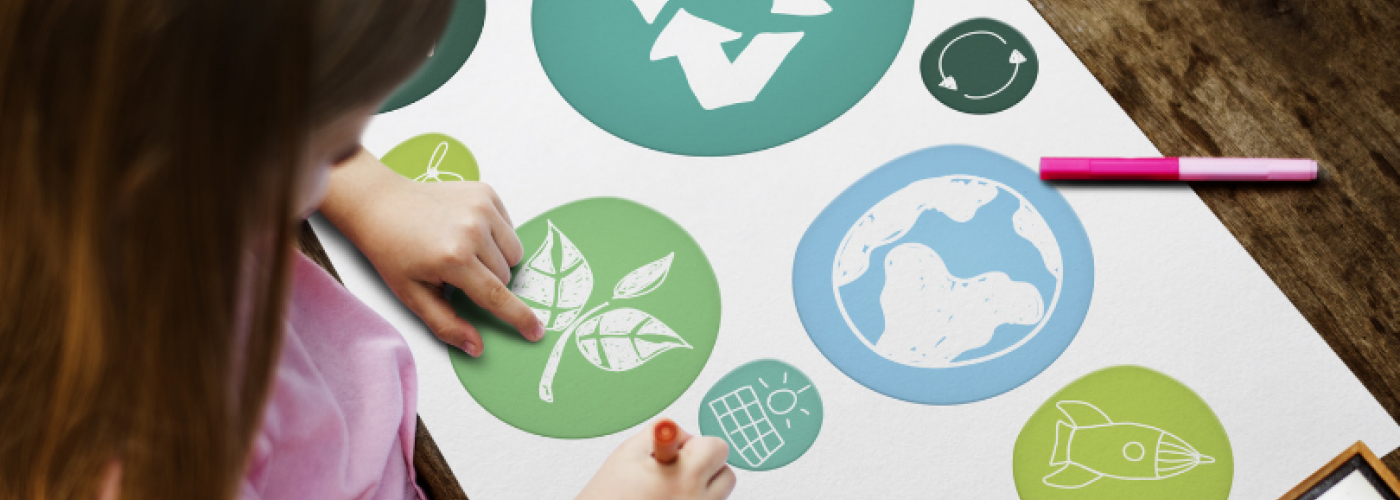29th October 2019
A task that propels a child into a new world, sets off a process of creativity, learning, and language practice in many forms seems to be something many young learner educators find a chore. Writing for young learners is often something that is done in isolation and at times, even ignored. This need not be the case. Done well, writing is a language rich activity that contributes to so many other areas in a child’s learning.
In many settings, a child is given a writing task in the form of a statement or instructions and a template on which to write, but no context has been set and no world has been formulated for the child to enter. This means writing has become a laborious task and something to get done as soon as possible. This will probably end in frustration, boredom and unfinished, or poorly finished tasks. But there is a solution, and it involves a few processes and strategies. I will work on one simple writing process, and plug in a few tools for each one to make it easier to work through.
Set a Clear Context
Children need to write for a purpose (Cameron, 2001) and this is where a context needs to be set. One way to do this effectively, and to the benefit of your colleagues, is to connect literature to content area studies (Helman, 2016). In simpler terms, it is useful to introduce a range of books, stories and texts of various genres and topics to spark creativity. This can be related to what goes on in other classrooms, subjects or learning areas. Making the writing task a feature of an overall theme, or topic is a very effective, and simple way to create a context.
Writing Process
A simple framework with steps to add information is very helpful and makes it easy for learners to visualize their writing journey and add a much wider range of information into their work. Showing the learners this process and marking their journey through it makes it a very visual experience which boosts their motivation to keep going as progress is tracked.
Pre-writing
The first stage is pre-writing which is all the activity that happens before learners construct their written piece. A context should have already been set. This is where the learners will brainstorm, use graphic organisers, have discussion groups, sequence events, talk about them and add notes. The aim here is to build the skeleton of what they will write and build up a bank of information to add to their writing later on. It is helpful to teach students how to use a wide range of graphic organisers so they use ones specific to the purpose and ones they prefer. Modeling discussion groups and different strategies also empowers students to be more independent in this stage.
Drafting
Now is the time for learners to use their pre-writing tasks to construct complete sentences and paragraphs. It is helpful at this stage to have some form of template for students such as a graphic organizer, or clearly mapped out space so the learners are clear on how much to write. Teachers can provide input on using better adjectives, fronted adverbials, varied vocabulary, and examples of sentences or chunks of language that contributes to your overall aim. It is important that at this stage, learners are putting thoughts to paper and the focus is not on spelling, punctuation and grammar.
Revising
The hard work lies in this stage. This is where the students will be pulling apart their work, fixing it and putting it back together. In this stage, learners need to make sure they stay on topic, add details, delete unnecessary words and details, use descriptive words, re-write sentences to make them easier to read and make sure the writing is appropriate for the audience.
Checklists work well for this stage, as well as clear examples of what the aims are. “What A Good One Looks Like” (WAGOLL) is a very effective tool, as well as vocabulary posters, punctuation guides, dictionaries and thesauri, and VCOP or CPOW guides. Of course, modeling how to use these is very important, and an input session on how to revise writing will reap huge benefits.
Editing
All good writers will meticulously check their work, but one character I have found to be even more meticulous is a peer in the classroom. This is a stage, I find, best done in three approaches: self, peer, teacher assessed. Creating a checklist of details needed in the story will help. Get the learners to check their work, edit their sentences and make sure all the errors have been dealt with. If this is tricky, give them a task to correct commonly found errors, check answers together and try again. Then move on to peer assessment. This will be more effective if the learners are taught to do this and given specific things to look for. Three stars and a wish is a great tool for learners. You could also encourage learners to borrow ideas that they think will make their writing better. Finally, it goes without saying that teacher involvement in this step is crucial. This can be done in small groups, or individually, or after class and handed back the next day with teacher feedback.
Evaluating
Learners can be reflective on their own work and others’. This provides a very valuable experience for the learners to be self-reflective and to have time to really come to terms with what the aims of the task actually look like. The teacher should also have a set of criteria to evaluate the work against, which should be shared with the students, and needs to align closely to the aims, and preferably be shown to the learners at the beginning of the process.
Publishing and how to maximise your results and boost intrinsic motivation
When done well, this stage will propel your students into high-flying writers. Children love stickers, stamps, and praise in all forms, but honoring their work is one of the more powerful tools a teacher can use to make a learner intrinsically want to perform to their highest standard.
Work needs to be presented beautifully, and placed in a prominent area, at student height so that it can be read by both adults and students, and also shared with the learning community. Writing can also be read in the classroom or a more public setting, parents can be invited to see the writing or to a recital of it. After all this, adding the work to a portfolio is a wonderful thing for both children and parents.
When there is clear evidence of learning and progress throughout, and the learners are working in a variety of roles and settings, writing is extremely rewarding and motivating. Due to all the other steps involved in the process, other skills are practiced such as speaking, listening, critical thinking, creative thinking, and a range of other higher order skills.
If you would like to know more about young learner teacher training or want to join a training workshop, please visit our website or contact me by email here.
References:
Helman, L (ed.) 2016, Literacy Development with English Learners, The Guildford Press, London.
Cameron, L 2001, Teaching Languages to Young Learners, Cambridge University Press, U.K.
Readwritethink.org 2019, Implementing the Writing Process, viewed: 28th September 2019.



